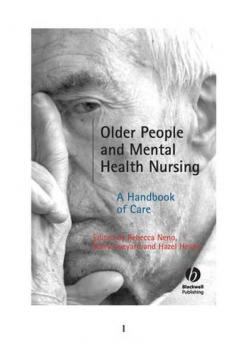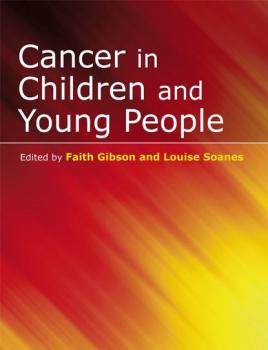ТОП просматриваемых книг сайта:
Медицина
Различные книги в жанре Медицина, доступные для чтения и скачиванияАннотация
… this text takes a novel approach… The style… is not as dry as other statistics texts, and so should not be intimidating even to a relative newcomer to the subject… The layout is easy to navigate, there are chapter aims, summaries and “key point boxes” throughout. -The Pharmaceutical Journal, 2008 This text is a clear, accessible introduction to the key statistical techniques employed for the analysis of data within this subject area. Written in a concise and logical manner, the book explains why statistics are necessary and discusses the issues that experimentalists need to consider. The reader is carefully taken through the whole process, from planning an experiment to interpreting the results, avoiding unnecessary calculation methodology. The most commonly used statistical methods are described in terms of their purpose, when they should be used and what they mean once they have been performed. Numerous examples are provided throughout the text, all within a pharmaceutical context, with key points highlighted in summary boxes to aid student understanding. Essential Statistics for the Pharmaceutical Sciences takes a new and innovative approach to statistics with an informal style that will appeal to the reader who finds statistics a challenge! This book is an invaluable introduction to statistics for any science student. It is an essential text for students taking biomedical or pharmaceutical-based science degrees and also a useful guide for researchers.
Аннотация
The Novartis Foundation Series is a popular collection of the proceedings from Novartis Foundation Symposia, in which groups of leading scientists from a range of topics across biology, chemistry and medicine assembled to present papers and discuss results. The Novartis Foundation, originally known as the Ciba Foundation, is well known to scientists and clinicians around the world.
Аннотация
Evidence-based Paediatric and Adolescent Diabetes brings together an international group of paediatric diabetes specialists to address the cause, course and complications of all types of diabetes. From a careful review of the latest research, they propose the best possible evidence-based recommendations for the care of children and the youth with diabetes. The text provides the reader with an understanding across three different levels: • Reviews how strong the evidence is for recommending one approach over another • Highlights areas where evidence is not based on the types of studies needed to provide ‘highgrade recommendations’, but where there is a general consensus as to the most sensible approach • Identifies the issues that remain inadequately addressed such that no definitive recommendations can be made As the incidence of type 1 diabetes mellitus continues to increase worldwide, and type 2 is being seen in more young people, this timely volume will help a wide range of health care professionals deliver the best possible care to their young patients.
Аннотация
Health professionals and students need look no further than the seventh edition of Leitman's Manual for Eye Examination and Diagnosis for a concise introduction to eye diagnosis and treatment. Designed to be read cover-to-cover, this short, well illustrated text summarizes key points needed for understanding basic examination techniques, use of instruments and major ophthalmic disorders. It provides a strong foundation of knowledge on which to grow and enjoy this ever-changing speciality. Manual for Eye Examination and Diagnosis is the only complete overview of eyecare available in such an easy-to-read format, and features: Over 360 full-color illustrations and clinical photographs Coverage of the fundamentals with practical, clinical points Updated information on refractive surgery, glaucoma surgery and neuro-ophthalmology Latest information on tests such as OCT and optic nerve fiber scanning.
Аннотация
The number of factors implicated in the regulation of cell proliferation and differentiation is already considerable and more are continually being identified. This book concentrates on tumor necrosis factor (cachectin) and lymphotoxin, but includes observations of their interactions with other cytokines, especially the interferons and interleukins. TNF can be either cytostatic or cytotoxic to cultured cell lines, and a variety of mechanisms are proposed, ranging from DNA fragmentation to activation of phospholiopases. TNF is also reported to stimulate the growth of normal fibroblasts in vivo. The in vivo actions of TNF described here include haemorrhagic necrosis of tumors, cachexia, effects on the vasculature, and antiparasitic and antiviral activities. Also presented is some interesting data from the first stages of clinical trials of TNF as an anticancer agent.
Аннотация
Some foods, as well as contributing essential nutrients to the body, also contain additional components that improve disease resistance and general health status over and above that induced by ingestion of conventional foods. The so-called functional foods, and prebiotics and probiotics exemplify the relationship that exists between nutrition, the gut (the largest element of the body’s immune system) and its flora, immunology and health. This important book contains chapters covering the basic principles of nutrition, gut microecology and immunology, as well as chapters which discuss the way in which this knowledge may be used to explain the positive and negative effects of food consumption, metabolism, probiotics and prebiotics. Food hypersensitivity and allergic reactions, carcinogenesis, and the role of nutrition in the reduced immunity of the aged are also discussed in detail. The editors of this exciting and informative book, who between them have a vast wealth of knowledge of the area, have drawn together and carefully edited international contributions from many well known and respected workers in the area. Gut Flora, Nutrition, Immunity and Health provides essential information for a range of professionals including nutritionists, dietitians, food scientists, microbiologists, gastroenterologists, immunologists and all personnel working in the development and use of functional foods and supplements, prebiotics and probiotics. Libraries in universities and research establishments where these subjects are studied and taught, and pharmaceutical and food companies should have multiple copies of this very useful book on their shelves. Roy Fuller is a consultant in gut microecology, based in Reading, UK; Gabriela Perdigón is based at the Centro de Referencia para Lactobacillus (CERELA) and at the Faculty of Biochemistry, Chemistry and Pharmacy of Tucuman University, Argentina.
Аннотация
Reviewing research evidence for nursing practice: systematic reviews highlights the key issues involved in conducting different types of systematic reviews – encompassing qualitative studies, quantitative studies and combining quantitative and qualitative studies. It enables nurses and researchers to understand the key principles involved in preparing systematic reviews and to critically appraise the reviews they read and evaluate their usefulness in developing their own practice. Each section starts with an overview of the methodology, followed by a selection of systematic reviews carried out in specialist areas of nursing practice. Part 1 explores systematic reviews and meta-analysis of quantitative research, part 2 explores meta-synthesis and meta-study of qualitative research and part 3 addresses integrative reviews that combine both qualitative and quantitative evidence. The final part explores the use of systematic reviews in service and practice development.
Аннотация
Older People and Mental Health Nursing provides an evidence-based guide to caring for the growing number of older people with mental health issues. It focuses on the knowledge and key skills which practitioners require to work effectively with older people who have, or are at risk of developing, mental health needs. Divided into five sections, Older People and Mental Health Nursing first explores the background, historical perspectives and influences on mental health care in later life. It then looks at the ethical and legal issues involved, therapeutic relationships, and the values underpinning support and care. Part three focuses on aspects which have traditionally been neglected in mental health care, including culture, religion and sexuality. Part four details specific mental health issues for older people, including delirium, depression, and dementia. The final section explores future trends in older people’s mental health and offers ideas on how nursing is developing, and could develop, to address these. Offers a practical evidence-based guide to the care of older people with mental health conditions Includes thought provoking practice examples throughout Contains guidelines for nursing practice & therapeutic interventions Includes case studies and reflective scenarios Written by experts in the field
Аннотация
Much has changed since the first book Paediatric Oncology: Acute Nursing Care (1999), therefore, this new edition encompasses these changes in relation to the practice itself and the evidence that underpins it. Emphasis is placed on ensuring terminology is accurate, in keeping with the language of the current day. The book is divided into six sections: Chemotherapy, Haematopoetic Stem Cell Transplantation, General Surgery, Radiotherapy, Late Effects of cancer therapies, and Palliative Care. There is a brief commentary at the end of each section/chapter by a ‘novice’ author but experienced practitioner, highlighting to the reader what is already known and what the section/chapter adds to their current knowledge and practice.
Аннотация
Praise for the previous edition: “…An outstanding handbook. It will be a familiar volume on most midwifery bookshelves, providing an excellent guide to midwifery focused care of both woman and child in the birthing setting.” – Nursing Times Online Providing a practical and comprehensive guide to midwifery care, The Midwife’s Labour and Birth Handbook continues to promote best practice and a safe, satisfying birthing experience with a focus on women-centred care. Covering all aspects of care during labour and birth, from obstetric emergencies to the practicalities of perineal repair (including left-hand suturing), the fourth edition has been fully revised and updated to include: Full colour photographs of kneeling extended breech and footling breech births New water birth and breech water birth photographs Female genital mutilation Sepsis Group B streptococcus Care of the woman with diabetes /Neonatal hypoglycaemia Mental health Seeding/microbirthing It also addresses important issues such as: Why are the numbers of UK women giving birth in stirrups RISING rather than falling? Why are so few preterm babies given bedside resuscitation with the cord intact? Would the creation of midwife breech practitioners/specialists enable more women to choose vaginal breech birth and is breech water birth safe? What is the legal position for women who choose to free birth – and their birth partners? Why are midwives challenging the OASI care bundle? Incorporating research, evidence and anecdotal observations, The Midwife’s Labour and Birth Handbook remains an essential resource for both student midwives and experienced practising midwives.










